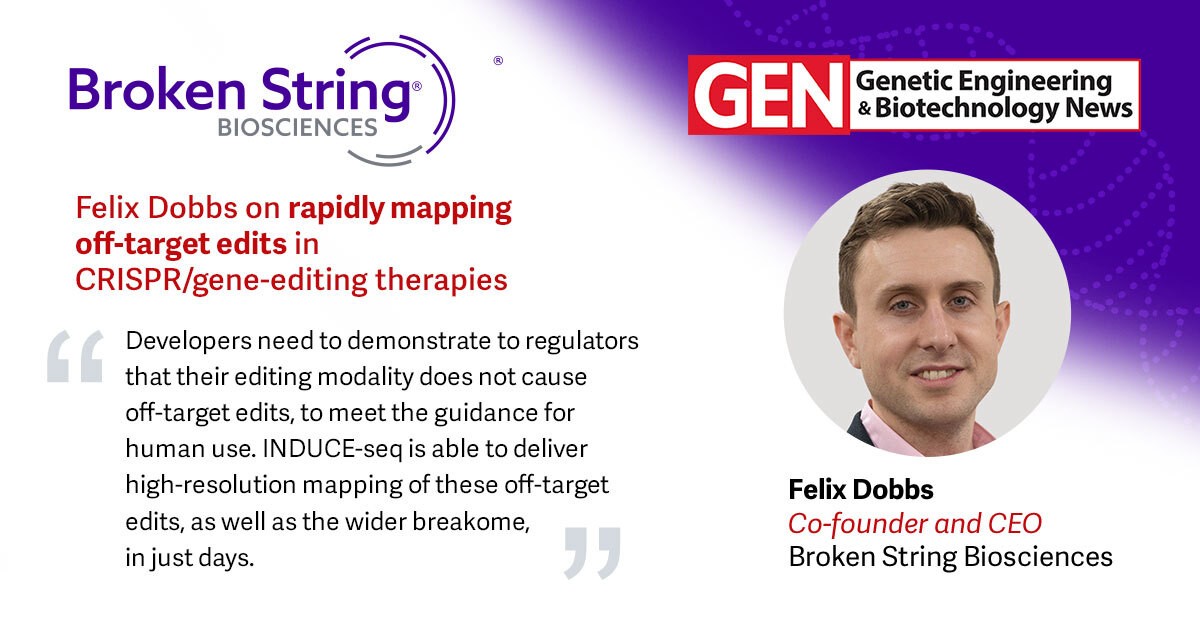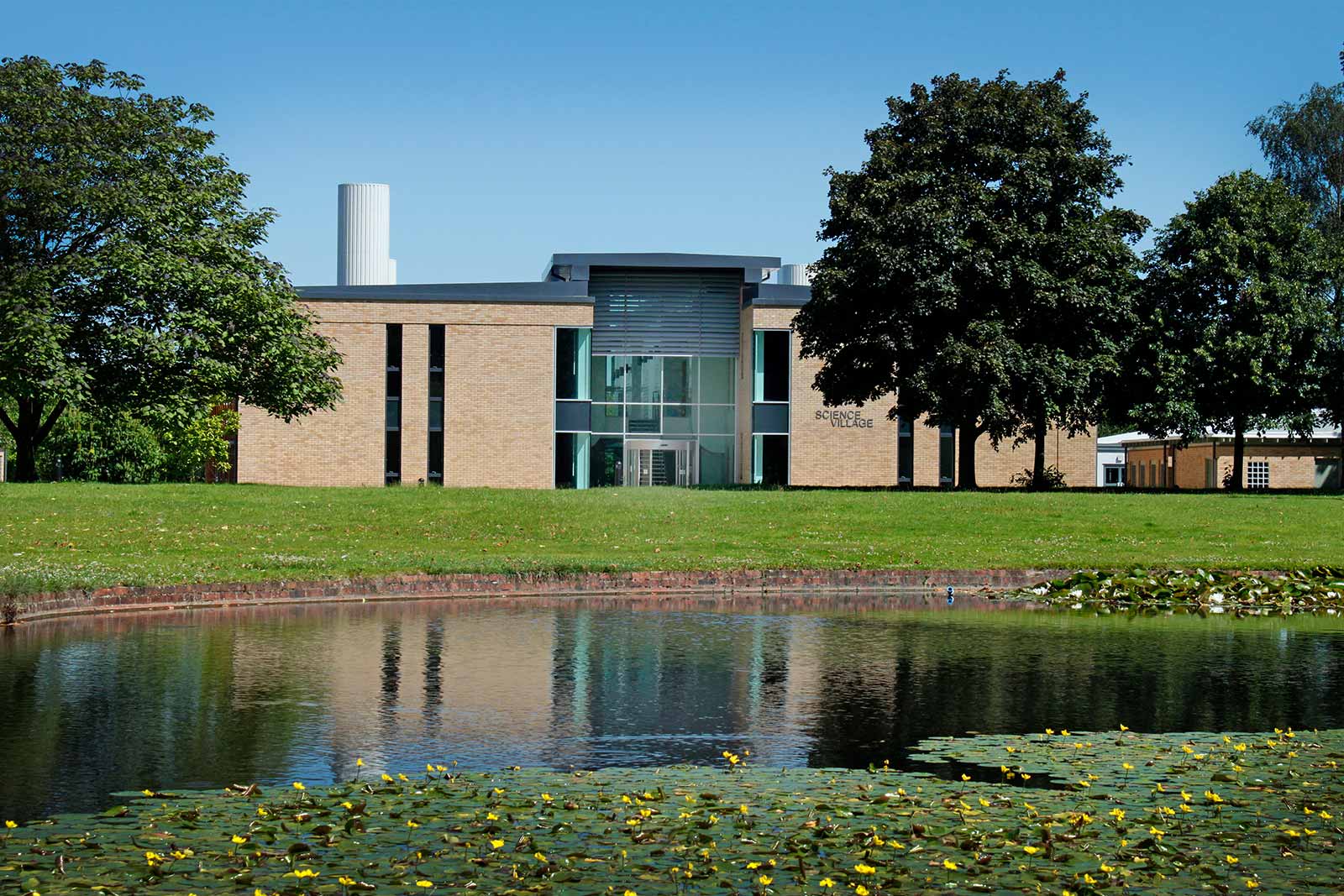
Quantifying the Breakome
August 1, 2025
Powered by gene editing advances like CRISPR and base editing, cell and gene therapy (CGT) is delivering on the promise of genomic medicine. First-generation CAR T-cell therapies, for example, have been functional cures for many patients with otherwise untreatable hematologic cancers. Newer gene editing tools continue to improve CGT safety, efficacy, and specificity. For more complex diseases, however, the next wave of therapies may require multiple, complex edits within a single cell.
The success of these therapies hinges on the accuracy of on- and off-target edits. Notably, concerns over off-target effects have been cited in several FDA clinical holds for CGTs.1 Until recently, identifying and quantifying genome breakage patterns relied on methods that were slow, expensive, or prone to PCR bias.
The collective measurement of all DNA breaks in a genome is known as the “breakome.” Emerging next-generation sequencing (NGS) technologies now allow us to measure the breakome, with implications far beyond CGT safety.

The breakome is a new layer in the multiomics landscape—alongside the genome, transcriptome, proteome, and interactome. While it hasn’t traditionally been included among these other omics, we consider it a significant new dimension.
Exploring the breakome
DNA breaks result from both external and internal sources—environmental exposures and biological aging, for example. Among these, double-stranded breaks (DSBs) are the most severe, causing genome instability and mutagenesis.
DSBs have been linked to diseases ranging from neurodegenerative disorders to cancer. When erroneously repaired, they can drive cancer progression. DNA instability enables cancer cells to clonally expand, and cancer therapies often exploit DNA damage response (DDR) pathways to selectively kill these unstable cells.
We know now that genome breaks do not occur randomly. Specific regions of the genome are more prone to breakage, and patterns vary by tissue, cell type, genetic background, and environmental exposure. By studying these patterns, we can uncover mechanisms of disease as well as identify unintended consequences of therapeutic genome editing, which often begins with a DSB.
Genotoxicity to breakome mapping
The INDUCE-seq platform grew from our work at Cardiff University, initially focused on measuring CRISPR-induced genotoxicity and DNA damage. In genotoxicology, any new compound must be tested for its ability to cause DNA breaks, as these are direct drivers of cancer. Genotoxicity data is a prerequisite for drugs before they enter Phase I clinical trials, forming the basis of a drug’s risk-benefit profile and playing a large role in determining whether it is safe for human use.
Despite advances in drug development, genetic toxicology has lagged in adopting novel technologies. Originating after World War II from nuclear radiation research, its standard assays remain largely unchanged: simple, cell-based, and low-resolution. For example, the comet assay detects DNA fragmentation via smeared bands in a gel—inadequate for this digital age of data-driven medicine.
Some methods, like the micronucleus test for DNA breaks in vivo, are also time- and cost-intensive. As a result, chronic toxicity studies can last six months to two years, requiring techniques like high-dose exposure in rodents before evaluation of DNA breaks can be made.
Modernizing break detection with NGS
Multiple academic groups have looked to modernize our ability to study the breakome. Mapping DSBs at single-base resolution using NGS has now been achieved through a variety of PCR-based sequencing techniques. One of the first was called Breaks Labeling, Enrichment on Streptavidin, and Sequencing (BLESS), which labeled DSBs in situ before genome-wide mapping. Ground-breaking in its time, the method’s sensitivity was low, and it initially required several million cells to perform. Subsequent iterations were able to improve on one issue or the other, but ultimately, all PCR-based methods of its type are subject to amplification bias.2
These challenges led us to develop INDUCE-seq, which is built on a PCR-free NGS flow cell enrichment concept. Because it does not rely on PCR, it avoids that bias, ensuring each sequencing read derives from a single, labeled DSB. In a Nature Communications publication, we demonstrated that the platform can detect DSBs induced by CRISPR-Cas9 genome editing, as well as its potential for measuring off-target edits.3 The platform can also be used to measure aggregate levels of genome stability, which has applications in multiple clinically relevant settings.
Unlocking the secrets of the breakome
Despite recognition of the many biological implications of DNA breaks, no one has yet provided a solution that enables a complete, breakome-wide view. INDUCE-seq was developed for this purpose—and soon proved useful beyond genotoxicity testing. Its clean data and fast turnaround have opened new avenues, many of which are still being discovered.
One ready application is cancer diagnostics. Revealing certain patterns of DNA breaks could be used to diagnose disease, identify a subtype, or even determine how a patient is responding to a treatment.
Drug development is another exciting application area. Several companies are advancing DDR-targeted therapies, including PARP inhibitors, some of which have already been approved. These selectively kill cancer cells by exploiting high levels of unrepaired DNA breaks in the cancer cells that are repaired in healthy cells. Having a detailed genome-wide view of break induction by emerging DDR modalities could enable the development of new classes of these drugs with novel mechanisms of action.
Breakomics may also guide the use of PPAR agonists, which induce apoptosis via DDR modulation. It could inform radiotherapy and chemotherapy strategies that deliberately cause breaks to kill tumors.
Gene editing therapies: A key use case
Among the most exciting near-term applications is gene editing therapy. Technologies like CRISPR and base editing rely on DSBs—directly or indirectly—as the first step of editing. Delivering edits safely means developers must demonstrate a low risk of off-target activity to regulators.
Currently, companies often create in-house assays and bioinformatics tools to evaluate off-target edits. These workflows can take weeks or months. INDUCE-seq shortens that timeline to just days, offering high-resolution break mapping and a full breakome profile.
This speed allows iterative use not just in late-stage testing, but throughout drug discovery. In addition to safety, breakome data provide insight into on-target edits and therapeutic function. Future versions of INDUCE-seq will run in developers’ labs, increasing scalability and efficiency.
Looking ahead
We believe that INDUCE-seq offers a solution for interrogating the breakome, particularly for gene editing. Our collaborators are also looking at new ways of leveraging the platform. Some groups, for example, are interested in identifying break hotspots in the genome that correlate to specific diseases, including neurodegenerative disorders such as amyotrophic lateral sclerosis (ALS, or Lou Gehrig’s disease).
Another interesting approach being used is AI: we have already developed algorithms that can identify natural vs. induced breakage patterns from the remarkably clean data produced by INDUCE-seq. This enables us to identify off-target editing based purely on
real-world datasets. The next step is to see if we can train an AI to predict the mutational outcomes of breaks entirely in silico.
As with many advances in genomics technology, we do not yet know all the applications that INDUCE-seq can be used for. But we do see the potential for novel breakome-derived insights to change how we understand cellular function and disease development, while helping deliver a promised generation of therapeutics unlocked by the power of genomics.
References
1. Lu S, Wang G, Albino Bacolla, Zhao J, Spitser S, Vasquez K. Short Inverted Repeats Are Hotspots for Genetic Instability: Relevance to Cancer Genomes. Cell Reports. 2015;10(10):1674-1680.
2. Pfeifer GP, Jin SG. Methods and applications of genome-wide profiling of DNA damage and rare mutations. Nature Reviews Genetics. 2024; 25, 846–863. doi:https://doi.org/10.1038/s41576-024-00748-43.
3. Dobbs FM, van Eijk P, Fellows MD, Loiacono L, Nitsch R, Reed SH. Precision digital mapping of endogenous and induced genomic DNA breaks by INDUCE-seq. Nature Communications. 2022; 13, 3989.


